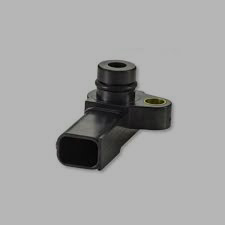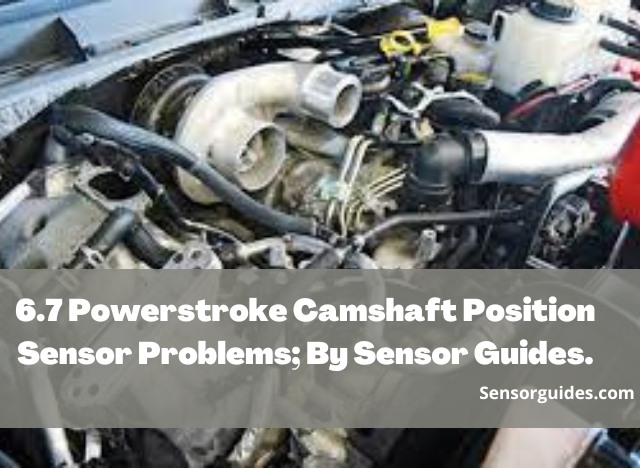How To Reset The Steering Angle Sensor Without Scanner? Complete Guide
Learn how to reset your vehicle’s steering angle sensor without the need for a scanner. This comprehensive guide provides step-by-step instructions to ensure your steering angle sensor is properly calibrated, enhancing safety and stability in your vehicle. Follow these simple steps for a smooth and accurate reset, all without the use of specialized tools. Welcome to SensorGuides.
Table of Contents
How to reset the steering angle sensor without scanner?
Resetting the steering angle sensor without a scanner can be done manually on some vehicles. However, please note that not all vehicles support this procedure, and it’s important to consult your vehicle’s owner’s manual or seek professional assistance if you’re unsure about performing this task. Here’s a detailed step-by-step guide:
Step 1: Park the Vehicle
Park your vehicle on a level surface and engage the parking brake. Ensuring the car is on level ground is crucial for an accurate reset.
Step 2: Turn the Steering Wheel
Turn the steering wheel all the way to the left until it reaches its maximum limit. Hold it there for a moment.
Step 3: Turn the Steering Wheel to the Right
Now, turn the steering wheel all the way to the right until it reaches its maximum limit. Again, hold it there for a moment.
Step 4: Center the Steering Wheel
Gently bring the steering wheel back to the center position. Make sure it’s perfectly centered.
Step 5: Turn the Ignition to “On” (without starting the engine)
Insert your key into the ignition and turn it to the “ON” position. This powers up the vehicle’s electronics without starting the engine. You should see various dashboard lights come on.
Step 6: Wait for 10 Seconds
Allow 10 seconds for the steering angle sensor to initialize. During this time, avoid touching the steering wheel.
Step 7: Turn the Ignition to “Off”
Turn the ignition key back to the “OFF” position. This will conclude the calibration process.
Step 8: Repeat Steps 4-7 Twice
Repeat the process of centering the steering wheel, turning the ignition to “ON” for 10 seconds, and then turning it to “OFF” a total of two times. This ensures that the sensor calibration is accurate.
Step 9: Start the Engine and Turn the Steering Wheel
Start the engine and gently turn the steering wheel from lock to lock several times. This means turning it all the way to the left and then all the way to the right multiple times. This helps finalize the calibration process.
Step 10: Verify Sensor Reset
After completing these steps, your steering angle sensor should be reset. Drive the vehicle for a short distance and pay attention to any warning lights on the dashboard. If there are no warnings related to the steering system, then the reset was successful.
Important Note: If the steering angle sensor is not resetting or if you’re uncertain about performing this procedure, it’s highly advisable to consult your vehicle’s owner’s manual or seek professional assistance from a qualified mechanic. Incorrect calibration can affect the vehicle’s stability control system, which is a critical safety feature.
What does the steering angle sensor do?
The steering angle sensor (SAS), also known as the steering wheel angle sensor or simply the steering sensor, is a critical component in modern vehicles, primarily serving the purpose of enhancing safety and vehicle stability. Its main functions include:
Electronic Stability Control (ESC)
The primary role of the steering angle sensor is to provide continuous feedback on the position of the steering wheel. This information is crucial for the vehicle’s electronic stability control (ESC) system.
ESC uses data from the SAS to monitor the driver’s intended direction and the actual path the vehicle is taking. If it detects a discrepancy, such as understeering or oversteering, it can selectively apply brakes to individual wheels and adjust engine power to help the driver maintain control during slippery or emergency situations.
Traction Control
The SAS also contributes to the operation of the traction control system. It helps the system assess wheel speed and slip conditions. By analyzing the steering angle and wheel speed data, the traction control system can intervene to prevent wheel spin, particularly when accelerating on slippery surfaces.
Adaptive Headlights
In some vehicles, the SAS data is used to control adaptive headlights. These headlights can pivot in the direction of the steering wheel to illuminate the road ahead as the driver turns the wheel, improving visibility around corners.
Lane-Keeping Assist
In advanced driver assistance systems (ADAS), the steering angle sensor is essential for lane-keeping assist functions. It helps the vehicle stay within its lane by making subtle adjustments to the steering, often with the driver’s input.
Advanced Driver Assistance Systems (ADAS)
SAS data is also utilized by various ADAS features, such as adaptive cruise control, autonomous emergency braking, and lane departure warning systems. These systems rely on accurate steering angle information to operate effectively and safely.
Airbag Deployment
In the event of a collision, the SAS may provide data to the airbag control module to determine the angle and severity of impact. This information can influence the deployment strategy for airbags and seatbelt pretensioners to optimize passenger safety.
In summary, the steering angle sensor is crucial in enhancing vehicle stability, safety, and the functionality of advanced driver assistance systems. It provides real-time data on the steering wheel’s position, which various systems use to improve driving dynamics and respond to changing road conditions and driver inputs.
What happens when a steering angle sensor goes bad?
When a steering angle sensor (SAS) goes bad or becomes faulty, it can lead to several issues and safety concerns in a vehicle. Here are some common symptoms and problems associated with a malfunctioning SAS:
- Warning Lights
One of the most common signs of a bad SAS is the illumination of warning lights on the vehicle’s dashboard. The Anti-Lock Brake System (ABS) light, Traction Control System (TCS) light, Electronic Stability Control (ESC) light, or the Check Engine Light may come on. These lights indicate that there is a problem with the SAS or related systems.
- Loss of Stability Control
The SAS is critical for the proper operation of the electronic stability control (ESC) system. When the SAS fails, the ESC system may not function correctly, leading to reduced stability and increased risk of skidding or loss of control during abrupt maneuvers or on slippery surfaces.
- Traction Control Issues
A malfunctioning SAS can also affect the traction control system. You may experience difficulty maintaining traction, especially on slippery roads, as the traction control system relies on steering angle data to prevent wheel spin.
- Inaccurate Steering Wheel Position
If the SAS is faulty, it may provide incorrect data about the steering wheel’s position. This can lead to misalignment issues, where the steering wheel is not centered when the wheels are straight, or the steering wheel angle does not match the vehicle’s actual direction. This misalignment can be a safety concern and may affect the vehicle’s handling.
- ADAS Malfunctions
Advanced Driver Assistance Systems (ADAS) rely on accurate steering angle information, such as lane-keeping assist and adaptive cruise control. A faulty SAS can lead to the malfunction of these systems or even render them inoperable.
- Reduced Safety
The SAS contributes to vehicle safety by providing critical information to safety systems like airbags. A malfunctioning SAS may provide incorrect crash data to the airbag control module, potentially affecting the deployment of airbags and seatbelt pretensioners during a collision.
- Difficulty Steering
A bad SAS can sometimes affect the power steering system, making it harder to steer the vehicle or causing steering wheel vibrations or stiffness.
- Erratic Behavior
The SAS can sometimes produce erratic readings or intermittent faults. This can lead to unpredictable behavior in the vehicle, making it challenging to drive safely.
When you observe any of these symptoms, addressing the issue promptly is essential. A malfunctioning SAS compromises vehicle stability and safety and can lead to other critical systems’ malfunction. To diagnose and fix a bad SAS, you should have your vehicle inspected by a qualified mechanic or technician who can use diagnostic tools to identify the exact problem and replace the sensor if necessary.
Why do you need to calibrate steering angle sensor?
Calibrating the steering angle sensor (SAS) is essential to ensure accurate and reliable operation of critical vehicle safety and stability systems. The SAS constantly monitors the steering wheel’s position, providing data that informs electronic stability control (ESC), traction control, and advanced driver assistance systems (ADAS).
Accurate calibration ensures that these systems can respond appropriately to driver inputs and changing road conditions. If the SAS is not properly calibrated, it may misinterpret the vehicle’s orientation, leading to incorrect interventions, impaired stability control, and compromised safety.
Calibrating the SAS helps maintain optimal vehicle handling, traction, and overall safety, enhancing the vehicle’s ability to prevent accidents and respond effectively to emergencies.
What is the difference between a steering torque sensor and a steering angle sensor?
Here’s a comparison between a steering torque sensor and a steering angle sensor in a table:
| Feature | Steering Torque Sensor | Steering Angle Sensor |
|---|---|---|
| Purpose | Measures the steering wheel’s position in degrees relative to its center position, providing information about the direction the vehicle is headed. | Measures the position of the steering wheel in degrees relative to its center position, providing information about the direction the vehicle is headed. |
| Function in Vehicle Systems | Provides feedback for power steering systems and advanced driver assistance systems (ADAS) like lane-keeping assist. | Essential for electronic stability control (ESC), traction control, and various ADAS functions. |
| Type of Data | Measures the force or torque applied to the steering wheel. | Measures the angle of the steering wheel. |
| Use in Stability Control | Typically not directly involved in stability control systems but may indirectly influence them by indicating driver intent. | Directly involved in stability control systems, helping prevent skidding and loss of control by comparing the intended and actual steering angles. |
| Influence on Traction Control | May indirectly influence traction control by indicating driver intent to turn. | Not directly involved in traction control but provides data to the ESC system, which can affect traction control. |
| Application | Mainly used in vehicles with electric power steering (EPS) to improve steering feel and efficiency. | Used in a wide range of vehicles, especially those with ESC, ADAS, and advanced safety systems. |
| Failure Consequences | Failure may lead to a loss of steering feel and feedback to the driver but may not directly affect stability control. | Failure can compromise stability control, traction control, and various ADAS functions, potentially increasing the risk of accidents. |
| Calibration | Calibration may involve setting zero torque or determining the steering wheel’s center position. | Calibration involves setting the steering wheel’s center position (zero degrees) and ensuring accurate angle measurement. |
| Example | Common in vehicles with electric power steering (EPS) systems. | Found in virtually all modern vehicles, regardless of power steering type. |
In summary, while both the steering torque sensor and steering angle sensor play essential roles in vehicle control and safety systems, they measure different aspects of the steering system. The steering torque sensor focuses on the force applied to the wheel by the driver, enhancing steering efficiency and feel, while the steering angle sensor provides information about the steering wheel’s position and is crucial for stability control and various advanced driver assistance features.






